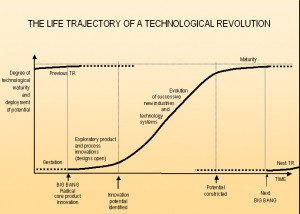Vindicated by Carr
In a dot Leader post this last March I maintained, not for the first time, that Nicolas Carr’s famous contention that “IT Doesn’t Matter” treated IT too generally. His conclusions fail, I argued, because IT is in reality not a single technology but an ever-renewing aggregation of technologies. For all that I think my point is fairly obvious I never expected to read, in an interview for CIO, that Carr agrees with me.
When asked how his ideas have held up he suggests that the article was understood to be discussing IT in a broader sense than he intended: “The article was really about the IT infrastructure, which is basically what IT departments were mainly concerned with 10, 11 years ago.” I can’t say it was obvious that his use of the term ‘IT’ exclusively applied to infrastructure; nor can I agree that IT departments were predominantly focused on the infrastructure at that time. But I’m more of a software guy and was making my living building software systems for large organizations in the years preceding Carr’s article (as now), so perhaps that’s just my bias.
He back-pedals on his conclusion that IT would become simply the management of cost and risks by admitting that “I think I probably understated the new things that IT departments would have to grapple with.” This is the point I have said in the past that Carr missed: IT – inasmuch as it is those things within the purview of the IT Department – is a constantly evolving array of technologies, each with their own applications and strategic characteristics.
If IT was defined to be only a single wave of server infrastructure technology, even including the general environment of networking and software technology that supports it, the article would never have been contentious. The S-curve through which any technology progresses from innovation to commodity is a fairly basic and widely-accepted idea. But it is the interaction of new trends in IT with each other and with business objectives that makes it an important focus of, and contributor to, an organization’s strategy.
Please forgive what probably sounds like a smug “I told you so” post. I’m not saying there wasn’t a lot of value in Carr’s ideas or the discussion they generated; nor am I implying that I’m smarter than Carr. I’m merely pleased to have the famous pundit admit that his argument’s weakness is precisely the hole that I spotted.
The Technology S-Curve
Image source: From Poverty to Power by Duncan Green
« How Will Your Company Look In a Bikini? Getting Paid For Personal Data »












